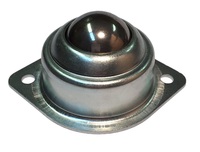Recent Posts
Ball Transfer Units and Their Various Uses
Posted by on

Have you ever looked under your mouse for your computer and seen the little track ball that moves your pointer around the screen? That concept is similar to the make up of ball transfer units. In most cases, the design consists of a large single ball that is surrounded by numerous small ball bearings. They are often found in industrial manufacturing machinery or in luggage delivery systems in airports.
Before the ball transfer unit was invented, inverted casters were used to get the job done. The problem that the casters presented were that they would follow a groove or trail, which required constant alignment in order for them to work together. Thus, the creation of the ball transfer eliminated this issue, and streamlined several industries along with a dramatic increase in productivity.
What Ball Transfer Units Actually Do
The most frequent type of ball transfer units contain an inverted ball, which allows objects to move rapidly across several units. This is a conveyor system that is sometimes referred to as a ball transfer table. Often, this is a connector to another conveyor system which transfers objects form one machine to another. Because of the multi-directional uses of the spherical ball within ball transfer units, they have the ability to transfer loads in most directions with great ease.
The More Common Applications
- Conveyors
- Cargo roller decks for air transport
- Automobile racks
- Equipment and platforms designed for lifting and transport
- Slider walls, windows and doors
- Hydraulic press machines
- Brick, ceramic, marble and sheet metal machinery
- Electronic and robotic applications
- Moulding devices
The list goes on for this simple yet highly effective design. But as you can see, it is a key component in the industrial cog that keeps things moving in everyday life. If you need parts for industrial machines, just click the link and find same day shipping for nearly everything you could possibly need.

